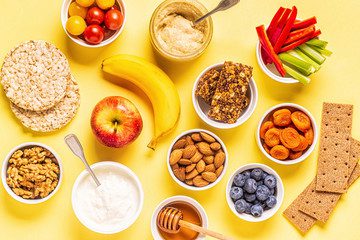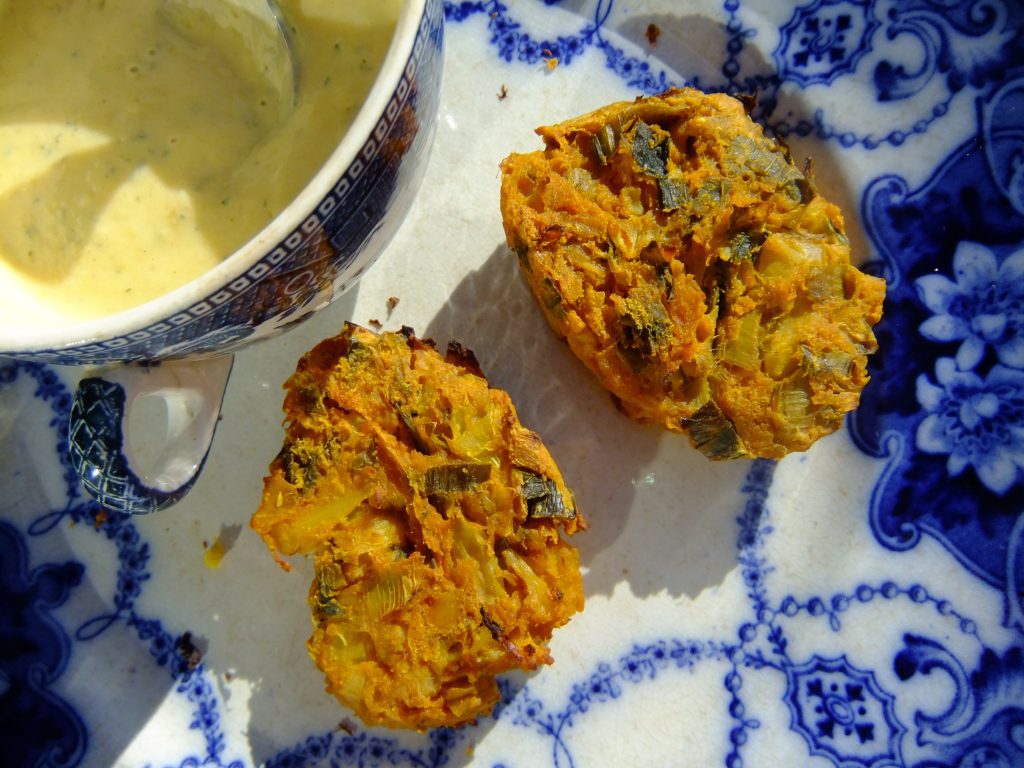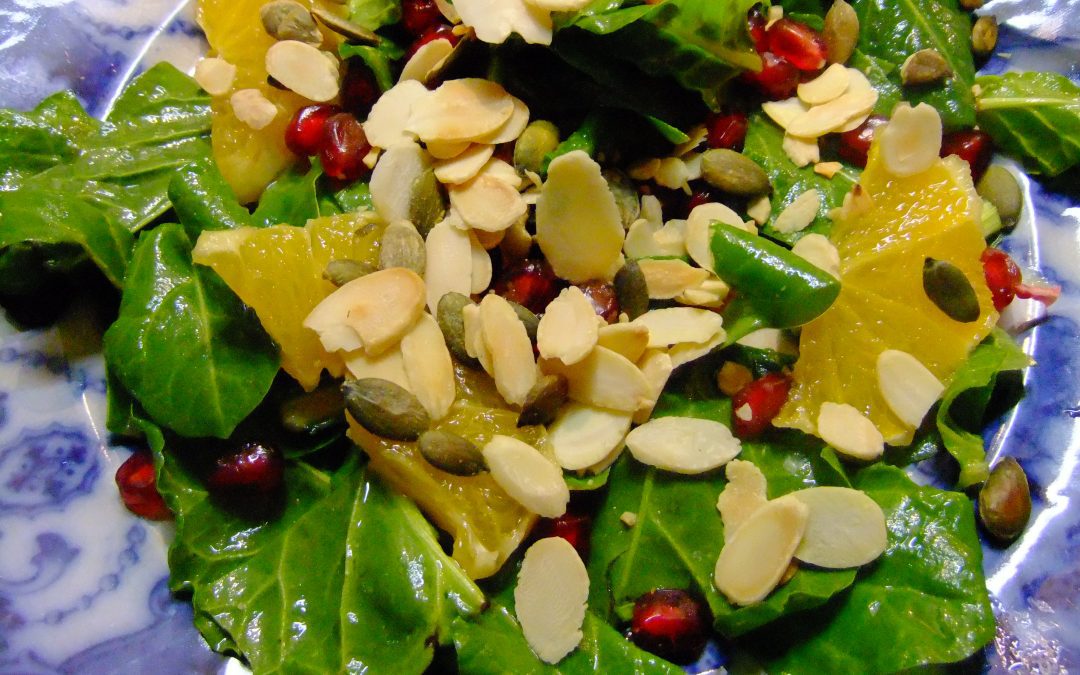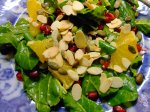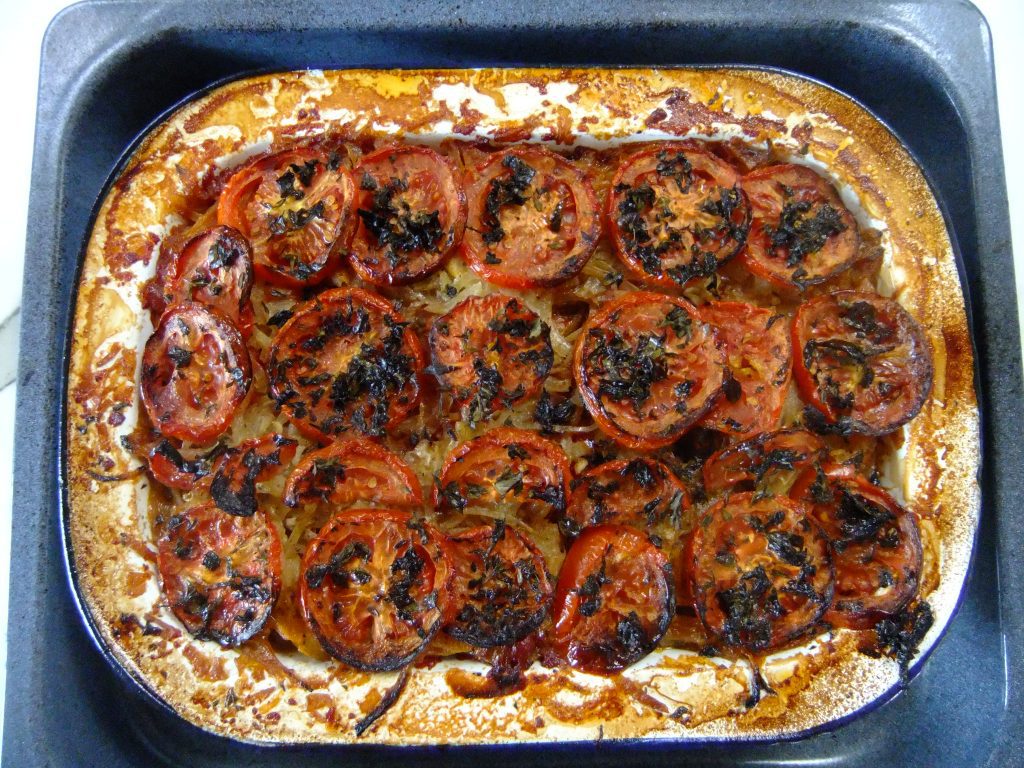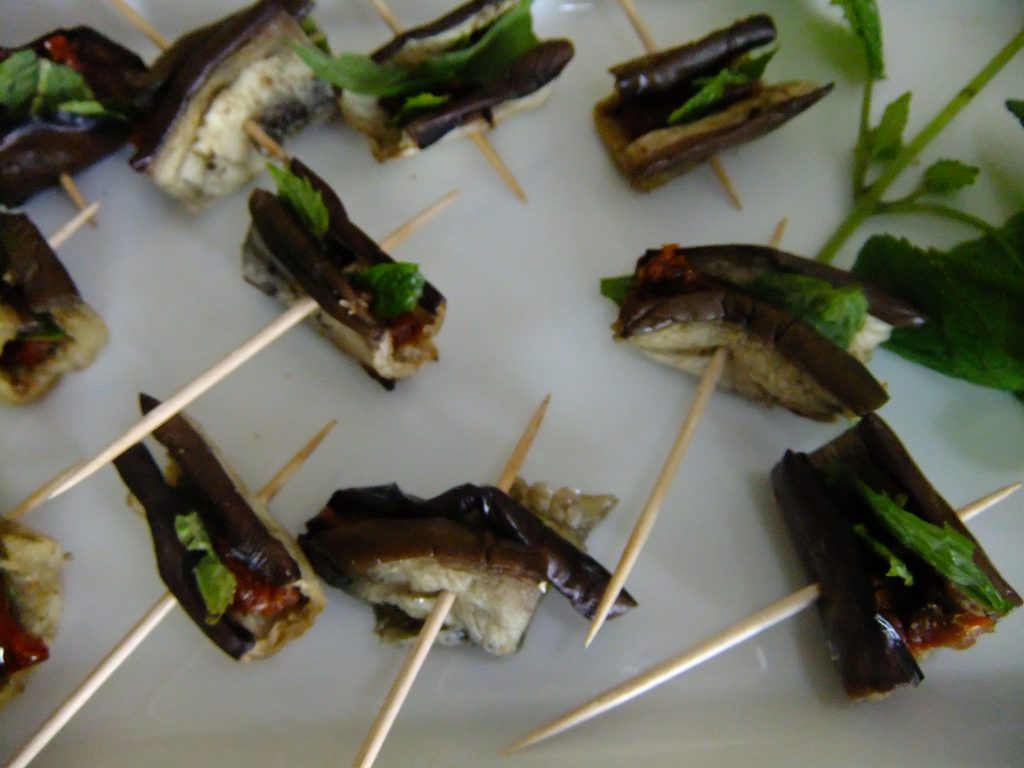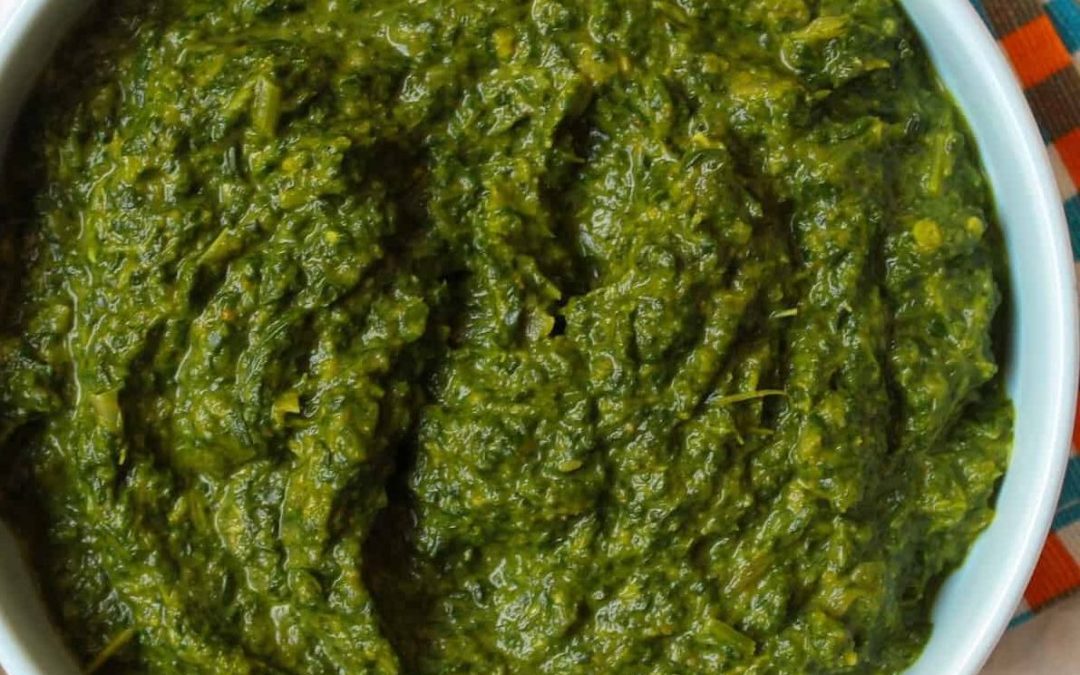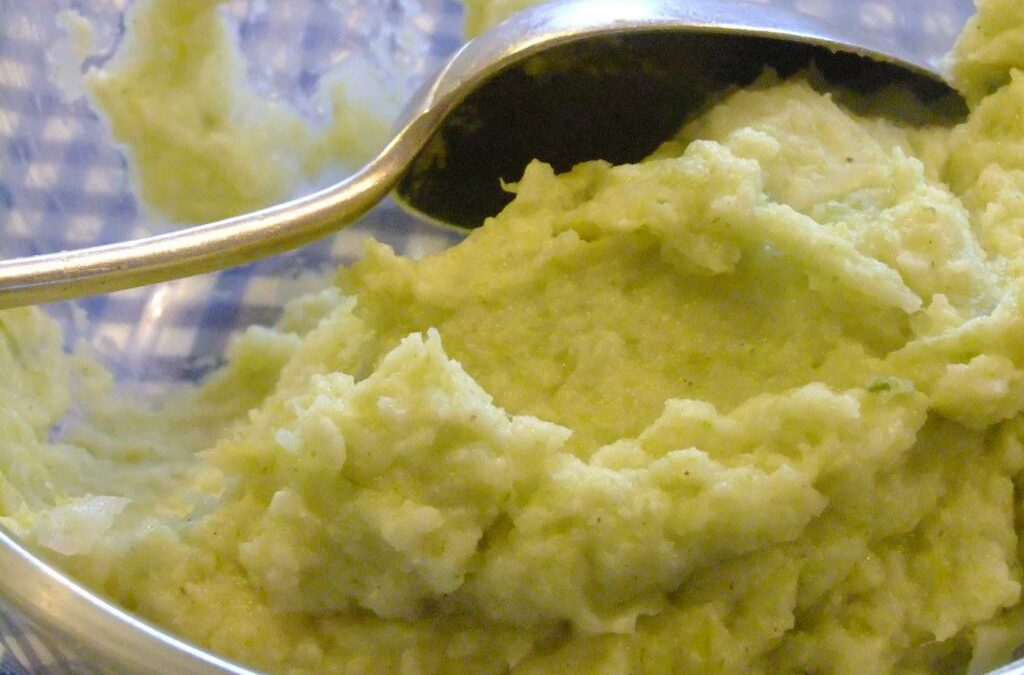
Jun 1, 2018 | Anna's Best Recipes, Main courses, Sides, starters, soups & snacks
This is a lovely on a summer’s day – especially as we’re getting some decent sun here in Ireland this year. The photo doesn’t do it justice – it’s day-glo green! If you have young children and a spiralizer they will really enjoy helping make the courgetti. Otherwise just buy spiralized courgettes or at a push, take a grater and grate the courgettes lenghtwise to get very long strings. To make this a complete meal just add some protein – maybe some leftover cooked chicken, or some prawns tossed in a hot pan with a little coconut oil and a chopped red chilli until cooked. The recipe is by food blogger Aoife Howard.
To serve 3
1 tsp garlic (1 big clove) crushed
1 large bunch fresh basil, destalked (reserve a few leaves for serving)
Juice 1/2 lemon
1/2 a ripe avocado
1 tbs extra virgin olive oil
Water
5 stalks of kale, washed, destalked and roughly chopped
Himalayan salt, sea salt and black pepper
1-2 courgettes per person, spiralized
1. Food processor method: combine avocado, lemon juice, basil, olive oil and kale. Pulse the mix, gradually adding the water one tablespoon at a time until smooth
Blender method: liquidize the garlic, basil, lemon juice, avocado and oil with a couple of tablespoons of water til smooth. With the motor running add the kale gradually, dropping in a few bits at a time. Blitz till everything is a vibrant, smooth green sauce. You might need to add a few more tablespoons of water to get the right consistency to coat your courgetti.
2. Add the salt and pepper to taste.
3. The courgetti can be eaten raw but if you prefer, gently warm through on a frying pan (ideally ceramic*) for 1-2 minutes until tender. If you don’t have a ceramic pan, you’ll need to put the merest smear of olive oil on your pan to stop the courgetti sticking.
4. Drizzle the pesto over the courgetti and toss well. serve topped with your choice of protein and garnish with a few torn up basil leaves.
* Why use a ceramic pan? These are pans that have a great non-stick surface but don’t add toxic teflon to your food every time you cook. Teflon is the black coating on non-stick cookware. The next best thing to a ceramic pan would be stainless steel or even cast iron.
Why this is good for you:
Raw food contains enzymes which help digestion. It also retains more vitamins (C and B vitamins) than cooked food. Green foods are rich in magnesium which helps us unwind mentally and physically and is also crucial for our immune systems. Basil, garlic and extra virgin olive oil help reduce numbers of toxic micro organisms in your gut. For optimum vitality long-term we all need to eat at least half our lunch AND dinner as non-starchy veggies like greens and salad vegetables.

Dec 20, 2017 | Anna's Best Recipes, Main courses
I was in a hurry last week and came up with this. Its super-fast on a weekday, provided you’ve already made up the Cajun spice mix (which only takes a couple of minutes). I’ve posted this mix already on the blog but its so good it deserves a reminder. I use it (when I remember) for grilling chicken fillets, salmon darnes and sometimes lamb chops. Rub the fish/meat with lemon juice first so the spice blend sticks on.
For 2:
2 hake fillets or darnes, about 160g each
Smoked paprika
Large bag of black kale (Cavolo nero) or curly kale
Sundried tomato paste, dairy-free red pesto (or if you are not dairy-free or on SC diet any good quality tomato pesto will do)
Fresh lemon juice (you will need about a teaspoon for the fish)
Extra virgin olive oil
Cajun spice mix:
You will need tinfoil and a roasting tin or dish
For the Cajun spice mix (store in an airtight glass jar away from heat and light)
½ level tsp chilli powder (omit or just use a pinch if you don’t like much heat)
1 level tsp Himalayan (pink) salt
½ tsp cayenne pepper
2 rounded tsp dried thyme
1 tbs each of:
Coarsely ground black pepper
Dried basil
Dried oregano
Ground coriander
Optional extra:
Cauliflower mash (see post) to serve
1. Turn on the oven to 200C.
2. Prepare the kale – wash, destalk and slice thinly. Boil your kettle and put the kale in your steamer over at least 2cm of boiling water. It can take quite a while to become tender.
3. While the kale is steaming, put the fish skin side down in an roasting dish with deep sides, rub the fish fillets with some lemon juice. Sprinkle Cajun mix and a good pinch of smoked paprika on each fillet until well coated.
4. Cover with tinfoil and give it 10 minutes in the preheated oven. After 10 minutes, test with a skewer to see if it is tender (this depends on the thickness of the fish). If not, give it another 5 minutes, covered again with the foil to stop the fish drying out.
5. Meanwhile, warm a vegetable dish for the kale. Into the dish put a generous heaped teaspoon of the pesto or paste, a dessertspoon of extra virgin olive oil and a good twist of black pepper if you have some. As soon as the kale is done to your liking toss with the pesto/paste to coat and keep warm.
6. Serve the fish on top of a pile of kale.
Optional extras:
Cauliflower mash (see blog post). This freezes well. I like to make a big batch then freeze leftovers in single portions. Reheat in a saucepan, stirring from time to time.
Why this is good for you
Herbs and spices are a powerhouse of vitality-boosting qualities. They protect the food during cooking from generating toxic inflammatory compounds (e.g. amines) while also protecting ourselves and our brains from accelerated ageing. Herbs and spices have hundreds of times stronger antioxidant properties than fruit and veg, weight for weight. Kale is a dark green leafy veg so its rich in magnesium and folic acid. We need both of these for making us more resilient to stress as well as for a healthy digestive system and good skin.

Jun 15, 2017 | Anna's Best Recipes, Breakfasts & smoothies, Sides, starters, soups & snacks
 How do you increase your veggie intake to help your health if you have almost no time in the evenings to prepare a full meal or you have problems chewing? Try these green smoothies. You can even make two servings and store leftovers in an airtight glass jar in the fridge for the next day. Citrus juice and airtight containers help prevent oxidation (nutrient loss and discolouration). If you don’t like your green smoothies cold you can heat these VERY gently in a saucepan until they are lukewarm.
How do you increase your veggie intake to help your health if you have almost no time in the evenings to prepare a full meal or you have problems chewing? Try these green smoothies. You can even make two servings and store leftovers in an airtight glass jar in the fridge for the next day. Citrus juice and airtight containers help prevent oxidation (nutrient loss and discolouration). If you don’t like your green smoothies cold you can heat these VERY gently in a saucepan until they are lukewarm.
Garden walk (950ml or 2 servings)
1 cup baby spinach, packed
1 cup fresh parsley (any type), packed
2 large ripe tomatoes
2 tbs freshly squeezed lemon juice
½ avocado
¼ tsp chilli pepper (can cause flushing so avoid if you have rosacea)
Optional: a cupful or so of filtered, boiled and cooled, or bottled spring water to help everything go round in the blender. Wash and chop everything roughly. Blitz well.
Cucumber dill-icious soup (950ml or 2 servings)
1 large cucumber
½ a small bunch of dill (or use fresh basil if you like)
1 small avocado
3 leaves curly kale, stalks removed
1 large stalk celery
½ lime, juiced
2 cloves garlic*
Wash everything and blitz everything with a little filtered, spring or boiled and cooled water to help it all go round in the blender.
Wild green pear (makes about 500ml)
1 ripe Bartlett or Williams pear (these are lovely and sweet)
1 cup local greens (e.g. rocket, organic baby spinach, lettuce, kale, watercress, beet tops, young dandelion greens)
1 cup water
1 heaped teaspoon sunflower seeds, pumpkin seeds or 8 blanched almonds
Wash, roughly chop and blitz the fresh produce with the water and sunflower seeds.
Salad smoothie idea (or “make this up as you go along”)
Blitz a large handful of roughly chopped green leaves, a tomato, celery stick, heaped dsp chopped red onion, clove of garlic, half a red or green pepper, a glug of extra virgin olive oil, a squeeze of lemon and a generous splash of tomato juice from the carton. Add Himalayan (pink) salt and fresh ground black pepper to taste.
Green gazpacho (makes about 3 large servings)
A green take on the traditional chilled Spanish summer soup. Quite filling.
1 bunch spring onions
3 cloves garlic, roughly chopped*
1 small green pepper (stalk and seeds removed)
100g organic baby spinach ½ romaine lettuce (or any lettuce other than iceberg)
1 avocado
Small bunch fresh coriander
1 small green chilli, halved and deseeded (optional)
50g ground or blanched almonds
3 tbs extra virgin olive oil
3 tbs apple cider vinegar/1 of white wine vinegar and 2 of sherry vinegar
200ml water (filtered, boiled and cooled, or use bottled spring water)
Himalayan (pink) salt
Freshly ground black pepper to taste
Optional: 3 tbs home-made kefir or natural yoghurt (or use unsweetened soya/almond-based yoghurt if you are avoiding dairy due to sensitivity or skin health issues)*
Wash and roughly chop the veggies, leaves and herbs. Put into your blender processor with the 3 tbs olive oil, the citrus juice/vinegar, 200ml water and whizz to a thick puree. You might have to do this in 2 batches. Taste for seasoning. If it’s a bit bland then add salt, freshly ground black pepper and maybe more lemon juice/apple cider vinegar or olive oil. It’s the amount of seasonings that makes this a great soup. Serve chilled with another generous slug of extra-virgin olive oil.
For more great green smoothies buy Victoria Boutenko’s “Green Smoothie Revolution” available on www.bookdepository.com (postage is free). If you make smoothies which include a piece or two of fruit, always include some protein/good fats (e.g. nuts, seeds, avocado, coconut oil) to avoid sudden dumps of sugar in your bloodstream that compromise digestive/skin health and energy.
What’s good about green smoothies
Green veggies are rich in magnesium needed for healthy skin, a chilled mind and plenty of energy. They are giving you a range of skin-supporting, digestive-system healing and vitality boosting phytonutrients.
*Garlic is a natural antibiotic. But unlike antibiotic medications, it helps healthy bacteria in your gut to flourish and lowers levels of disease-causing yeasts and bacteria. If you are new to using raw garlic, start small and build up. As it kills off disease-causing micro-organisms you may notice some short-term flatulence! This will disappear over time as you keep going – replacing unhelpful micro-organisms in your gut with healthy ones to help every aspect of your health.
Organic vegetables and fruits, where you are eating the outer surface (rather than peeling) give you a little dose of healthy bacteria with every mouthful. In “conventional” produce good bacteria are absent. Herbicides kill the beneficial soil bacteria. Monsanto originally patented the bestselling herbicide glyphosphate as an antibiotic. It disrupts thyroid function, nerve function and is deeply toxic. Many “conventional” crops contain residues.
Why use filtered, boiled and cooled or bottled spring water in a smoothie? This is to avoid chlorine, that kills beneficial bacteria in your gut and suppresses thyroid function. Boiling allows the chlorine to evaporate. Chlorine, like fluoride, disrupts your thyroid function by blocking iodine. Iodine also helps prevent skin infections, PMS and hormonal cancers (e.g. breast, prostate).

Mar 2, 2017 | Anna's Best Recipes, Sides, starters, soups & snacks
If you go for longer than 5 hours between meals you might sometimes need a snack. Most people who eat well balanced meals like on this blog don’t need to snack in-between and can fast for longer for extra health benefits. But here are some really easy snacks that give you carbohydrates (naturally sugar-containing foods like wholegrains or fruits) alongside protein/good fats (e.g. nuts, yoghurt, humous) for sustained slow-burn energy. Most of these foods are packed with nutrients to help you look and feel your best. Go for organic fruit and veg if you can – glyphosate residues on “conventional” produce kill beneficial bacteria and damage your gut. If you don’t have time for breakfast some of these snacks can fit the bill now and again if you include some fresh veg or fruit.
- 2 fresh apricots/plum + 4 walnut halves.
- Medium pear + 8 almonds.
- Medium apple + dessertspoon sunflower seeds.
- Nectarine or peach + dessertspoon pumpkin seeds.
- Apple + generous teaspoon almond butter straight from the jar.
- Handful carrot/cucumber sticks or red pepper strips + tablespoon humous.
- 1-2 Nairns rough oatcakes* (available in gluten-free also) + no-sugar peanut butter.
Note: The sweet Nairn’s oatcakes/biscuits have added sugar (not a vitality-boosting snack!).
1-2 oatcakes with generous topping of humous or lots of mashed avocado. - 1-2 oatcakes with thick tahini (ideally a raw brand e.g. Carly’s, from health shops).
- 1-2 oatcakes + cottage cheese and a sprinkle of black pepper.
- Mouthful leftover cooked chicken, smoked fish + an apple, mandarin or pear afterwards.
- Handful berries + 2-3 heaped tbs natural organic yoghurt.
- 2 fresh plums/apricots + 3 heaped tbs dairy-free “yoghurt” e.g. Coyo, Abbot Kinney’s Almond Starter, or unsweetened soya yoghurt.
- Small banana blitzed with 1 cup natural yoghurt/kefir + generous pinch of turmeric or cinnamon.
- For a treat try a Nakd bar from Tesco/health shops (=nuts + dried fruit).
- For another treat try 1-2 squares of 80% chocolate + dessertspoon sunflower seeds or 8-10 hazelnuts. Not too often though – 80% chocolate still contains added sugar.
Now you get the idea – a great snack is a portion of slow-release carbs (e.g. oats, whole fruit, carrot sticks) + high quality protein and/or good fats
Why these snacks are better for you
Carbohydrates are foods naturally high in sugars or with added sugars. Grains, root veg (potatoes, carrots) and almost all fruits are high in carbohydrates. Sugar, honey, fruit juice and white grains are even higher so aren’t a great choice in your regular diet. Carbs on their own (even from natural foods) give a quick rise in blood sugar that’s dangerous for your body. This promotes peaks and slumps in energy. But carbs combined with protein/good fats give you a better, longer-lasting slow-burn energy. Protein foods include meat, fish, beans, nuts, seeds, yoghurt, cheese, lentils and chickpeas. Great news if you want to look and feel your best for a long time to come.

Feb 17, 2017 | Anna's Best Recipes, Sides, starters, soups & snacks

Gluten-free baked cauliflower bahjis
I’ve been craving bhajis that are not deep-fried and finally got my wish with this lovely oven-baked recipe. This recipe is slightly adapted from one by Susanna Booth in the Guardian. Great for a buffet, finger food for a party, as a starter, or cold for a picnic. Everyone’s happy to eat it and take seconds. They
don’t need to know that its both gluten-and dairy-free! I like these just as much cold as hot.
NB some mango chutneys contain malt vinegar, which contains gluten, so read the label carefully before you buy.
Makes 15-20
For the bhajis
300g cauliflower
2 medium leeks, green and white parts
1 tbs olive oil (or, even better, virgin coconut oil)
100 gram (chickpea) flour
1 rounded tsp (teaspoon) ground turmeric
1 level tsp ground coriander
1 level tsp ground cumin
A pinch of Himalayan or Atlantic Sea Salt
80ml water
2 tsp mango chutney (make sure it’s a gluten-free one that does not contain malt vinegar) OR 2 rounded tsp St Dalfour or Follain no added sugar apricot jam and a pinch of ground ginger OR 2 tsp unsweetened mango puree (you can do this by blitzing the mango for the dip and reserving 2 tsp for the actual bahjis).
2 rounded tsp tomato puree
Olive oil (or even better, virgin coconut oil) for greasing the baking tin
For the dip
100g natural soya yoghurt (or natural yoghurt or thickened kefir for for milk-eaters)
Half a ripe mango
1 rounded tbs (tablespoon) mango chutney (again, make sure it’s gluten-free)
5 fresh large mint leaves
1. Preheat the oven to 180C. Wash and prepare the cauliflower and leeks. Dice the cauli into tiny pieces; cut the leeks lengthways and then into thin slices. Sweat all the veg in the olive oil in a heavy bottomed pan, covered with a lid, for 5-10 minutes until just softened.
2. Put the gram flour, spices and salt in a bowl. Add the water, chutney and tomato puree and mix to a smooth paste. Add the sweated vegetables and stir until everything is well coated. It will be very thick.
3. Drizzle a little olive oil over a taking tray. Rub with a spatula or brush to coat the whole surface.
4. Dollop the bhaji mix on the tray 1 tbsp at t time. Flatten them a little with the back of a spoon, spatula or fishslice.
5. Bake for 10-15 minutes until slightly browned. Take the tray from the oven, then flip each bhaji over using a fish slice. Bake for another 10-15 minutes until golden. You can eat them hot or cold.
6. Make the dip by blitzing the chutney, mango, mint and yoghurt together in a mini food processor or else use a bowl and stick blender. Refrigerate for up to a day before serving.
Variation:
I made an imitation mango chutney for this recipe by mixing a few things I had in the cupboard: 1 1/2 tbs St. Dalfour apricot jam, a pinch of onion salt, a large pinch of each of dried garlic and ground coriander and 1/2 teaspoon of distilled or wine vinegar.
Why this is better for you:
Gram (chickpea) flour is a good source of protein to help keep you feeling fuller for longer. Leeks are rich in inulin, which helps feed good gut bacteria. Good bacteria are important for all aspects of your health from weight management to clear skin and good digestion and absorption of nutrients. Because these bhajis are baked rather than deep fried which means they don’t toxic heated polyunsaturated oils. In cooking, coconut oil is even better for you then olive oil. This is because coconut oil is less damaged by heating then olive oil. coconut oil is rich in medium chain triglycerides, which can help boost energy because the body digests them very easily. Amazingly, coconut oil is used by your body directly to make energy rather then being stored as fat in your body. This makes it a better tool for weight management than many other oils. Herbs and spices such as turmeric, cumin and coriander have well-documented anti-inflammatory properties and a great health boost for anyone who cares about their health, fitness or skin.

Jan 5, 2017 | Anna's Best Recipes, Sides, starters, soups & snacks

Spinach pomegranate & orange salad
I stole this salad from a newspaper and adapted it to include some protein (flaked almonds) so you’re not just getting a huge blood sugar spike from all the fruit. This makes a lovely starter before a winter stew of some sort. Or else make a big platter of it for a buffet meal. The colours are stunning. Pomegranates are still in season in January (they start in November in Asian shops and good greengrocers). If you can’t get pomegranates then either increase the orange to a whole one or substitute a tablespoon of goji berries soaked overnight in clean water.
2 large handfuls baby spinach, washed and dried
1 tbs pumpkin seeds (for SC diet initial 12 weeks use almonds instead)
1 tbs flaked almonds
1/2 a small orange
A fresh pomegranate (you will use 1/4 to half of the seeds)
Dressing:
3 tbs virgin hazelnut or walnut oil (or use extra v. olive oil at a push)
Juice of 1 small orange
Freshly ground black pepper
Pinch of Himalayan/Atlantic Sea Salt
1. On a very low heat in a heavy bottomed pan, gently dry the pumpkin seeds and flaked almonds, until they seem dry and the pumpkin seeds are slightly swelled. It is better to eat nuts and seeds raw but this light toasting does make them super delicious. Remove from the heat as soon as they are slightly dried and crispy.
2. While this is happening, whack your whole pomegranate all over with a wooden spoon or a pestle for a few minutes. This loosens the seeds. Then cut it in half and pick out the ruby-coloured seeds.
3. Cut your orange in half across its equator, cut off the skin and pith with a sharp knife. Cut the remaining piece in half, then slice as thickly or as thinly as you feel like.
4. Mix your dressing in a screw top jar and shake to amalgamate.
5. Now put half the pomegranate seeds, the orange, spinach, and at least a tablespoon of dressing in a large bowl and toss until coated and glistening.
6. Divide between two plates, adding more pomegranate seeds if you think there’s not enough for your liking. Sprinkle over the almonds and pumpkin seeds. Enjoy…
Why this is good for you:
Spinach, like all dark green leafy veg, is rich in folic acid. Folic acid is important for your liver, helping keep your skin clear and healthy. Its also important for your mental health, helping reduce stress levels. Pomegranates are high in antioxidants and the raw, virgin cold-pressed oils are a good source of omega 6 oils and vitamin E for beautiful skin. Don’t forget to keep your virgin nut/seed oils in a cool dark place in an airtight bottle, so the delicate beneficial oils don’t get damaged. Pumpkin seeds are a rich source of methionine (and zinc) which helps clear heavy metals and other toxins from the body. Almonds are high in calcium and magnesium for good stress management and clear skin.

Aug 31, 2016 | Anna's Best Recipes, Main courses, Sides, starters, soups & snacks
This is delicious hot, lukewarm or cold. I also like to mix leftovers with cooked quinoa to take to work. People living on the Greek island of Ikaria have the secret of healthy longevity. This is one of their recipes, which I found in the Irish Times recently. We can’t get giant white beans here but butter beans work really well. I wasn’t sure it would turn out well, but it was delicious – very intense flavours. It contains a lot of liquid. So make sure to use a large dish, otherwise it can boil over in the oven (like it did on me). Slicing the carrots very thinly is a bit of a fiddly chore unless you use a mandolin or a food processor. If you can’t face it or don’t own a decent knife: slice about 1/2 cm thick, steam for a few minutes to soften (keeping the water to make the veg stock with so you don’t lose flavour or nutrients). If you put thick sliced raw carrots into the dish they will still be raw when everything else is starting to burn! Yummy though. This also works well as a side dish with, say, roast lamb.
For 4:
6 tbsp extra virgin olive oil
1 x 640g jar of passata (sieved tomatoes)
2 x 400g tins butter beans, drained (or soak 400g or 2 cups dried beans overnight and boil till tender)
3 onions, finely sliced
4 garlic cloves, finely sliced
4 carrots, thinly sliced
2 large beef (or 4 regular) tomatoes, sliced
A good handful of fresh oregano (if you can’t get it, use 1 dsp dried)
A few sprigs of thyme
2 bay leaves
300ml vegetable stock
Sea salt and ground black pepper
- Preheat an oven to 220 degrees (205C fan).
- Add the onions and garlic to a bowl with four tablespoons of olive oil. Season with sea salt and ground black pepper. Massage the onions until they begin to soften down.
- Arrange the butter beans in the base of a large earthenware or baking dish. Place carrots on top.
- Pour over the passata and spread evenly. Arrange the onion mixture across the top, then the tomato slices and press the herbs on top.
- Pour over the vegetable stock, drizzle on the remaining oil and season. Bake on the middle shelf for 40 minutes or until the point of a knife or cooking skewer goes through the carrots easily.
Serve warm, lukewarm or cool with a green salad on the side. You can use leftovers as an accompaniment to grilled or baked white fish. Or (provided you’re not on SC Diet) stir into cooked quinoa to make a quick lunch (or packed lunch).
Why this is good for you:
Butter beans, onions and garlic give you soluble fibre which feeds good gut bacteria needed to help you get rid of toxins, have happier mood (yes, gut bacteria make the feel-good brain chemical serotonin!) and a healthier immune system. A healthy immune system is one that doesn’t over react causing autoimmunity (e.g. rheumatoid arthritis, hypothyroidism). Nor does it under react causing lowered resistence to viral, bacterial or fungal infections. Lycopene in tomatoes is fantastic for supporting vision and so are carrots with their various carotenoids. Lycopene and carotenoids are antioxidants – they protect you from damage.

May 11, 2016 | Anna's Best Recipes, Sides, starters, soups & snacks

Aubergine mint feta and sundried tomato bites
I concocted these delicious salty, minty, meaty bites recently. Great for providing some soakage with a glass of wine before a nice dinner (helps you avoid the sugar rush from the wine). The combination of mint and grilled aubergine gives a Middle Eastern feel, I think. do try to get true feta (made from goat or sheep milk, not cow). It has a better flavour and is easier to digest.
Makes about 20
1 very large or 2 medium aubergines, sliced lengthways into 1cm thick slices
1 tsp ground coriander
A few sprigs fresh mint
Half a block of goat or sheep feta cheese
5 sun dried (or semi sun dried) tomatoes marinated in oil, each cut in quarters or sixths
Freshly ground black pepper
To secure: cocktail sticks or around 20 long chives
1. Arrange the aubergine slices on a grill and sprinkle with ground coriander. Grill under a medium heat until golden, turn and continue cooking until softened. These will keep for several days in the fridge or until you are ready to assemble the bites.
2. Slice the long aubergine pieces crossways into 4cm wide strips. Onto each piece of aubergine put a piece of sun-dried tomato and a piece of torn mint leaf.
3. Give everything a good grind of black pepper. Roll the aubergine up with the mint and tomato inside. Secure with a cocktail stick or if you are feeling super-fancy, tie with a chive, knotted to hold everything together.
Why these are better for you
Did you know that goat and sheep cheese are easier for many of us to digest than cow cheese? This is because they contain less of the hard-to-digest casein protein than cow milk products do. Any cheese with a tangy taste has also undergone some fermentation, converting the lactose (milk sugar) into lactic acid. This means that they are not a problem for people who can’t digest lactose. If you have taken antibiotics, have an inflammatory bowel condition or have digestive or skin issues you could be low in beneficial bacteria like lactobacillus. This impairs your ability to digest lactose. Mint and peppermint can help reduce levels of bad bacteria (that’s why they are in toothpaste!) but support growth of good bugs. This can be really helpful for making your digestive system more comfortable after a meal. Coriander is anti-inflammatory, anti-ageing as well as being delicious. Caution: don’t cram in tons of sundried tomatoes or feta every day because these are very high in table salt. Table salt is an industrial product with added aluminium to keep it from clumping – this makes it not very good for us. For adding to food, Atlantic sea salt or Himalayan salt is a better choice as it contains other minerals besides sodium. Eating protein with your glass of wine instead of high carb snacks like crisps or bread sticks means you don’t get a sugar rush (very damaging to all your body tissues, including a leading cause of wrinkles!!).

Mar 8, 2016 | Anna's Best Recipes, Sides, starters, soups & snacks
I like to cook this to go with a fish, meat or vegetarian curry. This is great with the butterbean curry I posted recently, or any Indian fish, meat or lentil curry. I adapted this recipe from “The classic 1000 Indian recipes” switching to coconut oil instead of polyunsaturated vegetable oil. I love to have a popadom or two with this – buy them raw for a few cents in your local Indian shop and microwave individually on high for 1 minute. I’m not a fan of microwaves but when the alternative is deep frying and it’s only once in a while, what the hell…
You will need a mini food processor (or old-fashined mouli-legume) to blend the spinach into a puree.
For 4
500g spinach leaves, washed
2 level tbs virgin coconut oil (or butter or ghee)
3 large garlic cloves, crushed or finely chopped
4cm ginger root, peeled and finely chopped or grated
1 large onion, finely chopped
1 rounded tsp garam masala
1 rounded tsp ground cumin
½ tsp ground turmeric
½ tsp ground red chilli (optional)
1 cup water leftover from steaming veg, or use plain water
Himalayan or Atlantic sea salt
1. Place the spinach in a steamer, cover and steam for a few minutes until wilted. Blend to a puree in the food processor.
2. Heat the coconut oil in a heavy-based pan and sweat the onion, ginger and garlic with 1 tbs water over a medium heat until softened and translucent but not brown. Sweating involves using a gentle heat and covering the pan with a lid or plate so the steam cooks it.
3. Stir in the ground spices and a pinch of Himalayan/Atlantic sea salt.
4. Mix in the blended spinach and heat through, stirring, for a few minutes.
Serve with:
My butterbean curry or a meat/fish curry.
Darnes of salmon you have dusted with (gluten-free) curry powder and grilled (allow about 5-6 mins flesh side up then turn and grill skin side up for 1-2 mins).
Why this is good for you
Herbs and spices have fantastic health benefits. From helping blood flow to your brain to inhibiting inflammation. Chilli is clinically proven to heal stomach ulcers. ginger is anti-inflammatory especially in the digestive system, where it soothes inflamed membranes. Turmeric aids liver function and quells inflammatory conditions in the skin, joints and more. What’s not to like as they also make meals SO much more exciting. Not just fresh but dried herbs and spices have benefits provided you keep them in airtight containers away from sunlight. Like all dark green leafy vegetables, spinach is a rich source of folic acid and magnesium. Folic acid helps your digestive system carry out essential repairs and maintenance every day while magnesium is essential for liver function, healthy skin, stress reduction and sleep.

Feb 17, 2016 | Anna's Best Recipes, Sides, starters, soups & snacks
This mash is a fantastic substitute for mashed potato. I love it because contains more nutrients and much less (natural) sugar and is still delicious. All the comfort of regular mash, none of the downside.
1 small head cauliflower, separated into florets
1 leek, white (and 6cm of green if you like), well washed, cut into 1cm slices
1 knob (about the size of a walnut in its shell) of organic ghee (for people with dairy protein tolerance) or butter or 1 dsp extra v olive oil
2 tbs of unsweetened additive-free non dairy milk like coconut or almond or (if you can eat dairy) you can substitute regular milk or cream
Pinch of ground nutmeg (optional)
¼ tsp freshly ground black or white pepper plus pinch of Himalayan salt/sea salt
1. Steam the cauliflower until softened, then throw the leek in on top and steam everything until very soft. Drain well.
2. Place the vegetables with the milk, ghee/butter and seasonings in the food processor and blitz for a few minutes until smooth. It will have some flecks of green thorough it and look like potato mash.
Tip:
Make lots and store leftovers in the freezer. Reheat over a gentle heat, stirring.
Variation:
Add 2 good tablespoons of chopped parsley when blitzing.
Why this is good for you:
First of all you are getting sulphur from brassica and onion family veg (cauli and leek). This helps your detoxification. Leeks also contain prebiotic fibre which turbo-charges growth of certain good gut bacteria to keep you well. There’s also the major benefit of this mash being much lower in carbohydrates (sugars) than potato mash. Potatoes, especially peeled and mashed are massively high in (natural) sugars which promote blood sugar imbalances when you eat large amounts. Meals very high in carbohydrates slow down our detoxification. Also, because they are satiating, they prevent us from eating lots more vitality-boosting green and non-starchy vegetables in a meal. A seemingly healthy meal of say potatoes, carrots, parsnips and meat is in fact a large sugar overload because the veg are all root vegetables and therefore rich in sugars. Potatoes contain much more sugar than other root veg like carrots. A much more health-supporting combination would be 25% meat, up to 25% starchy carbs (e.g. carrots, potatoes, parsnips, turnips) and 50% or more non starchy vegetables (e.g. green vegetables, cauliflower).
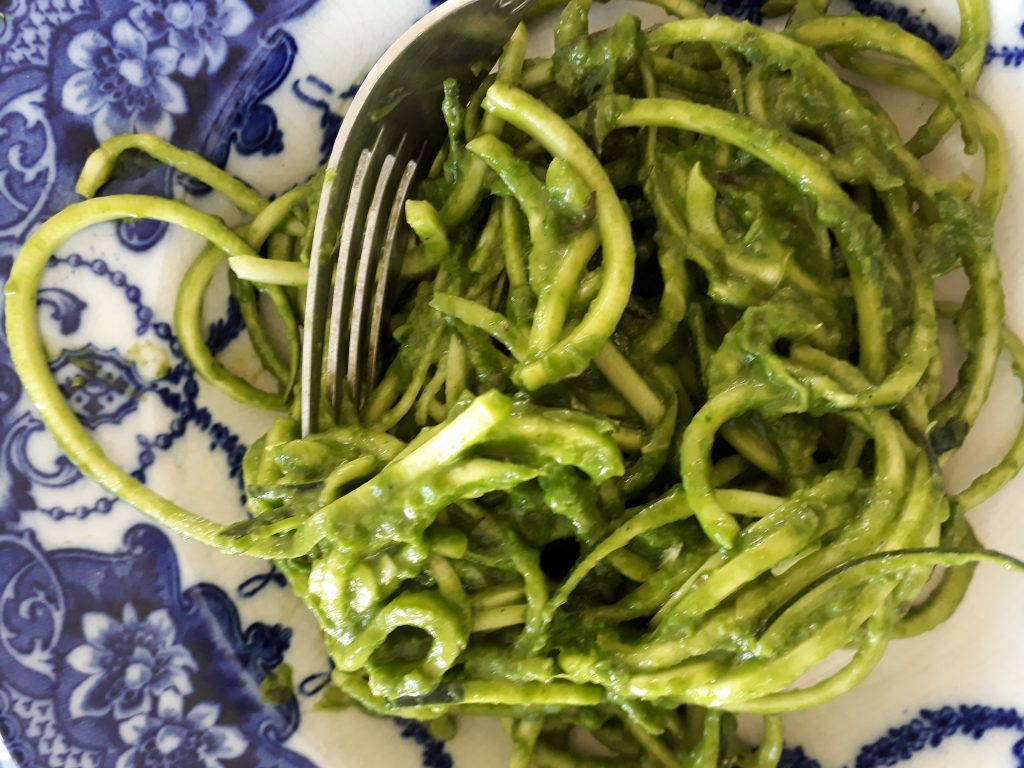


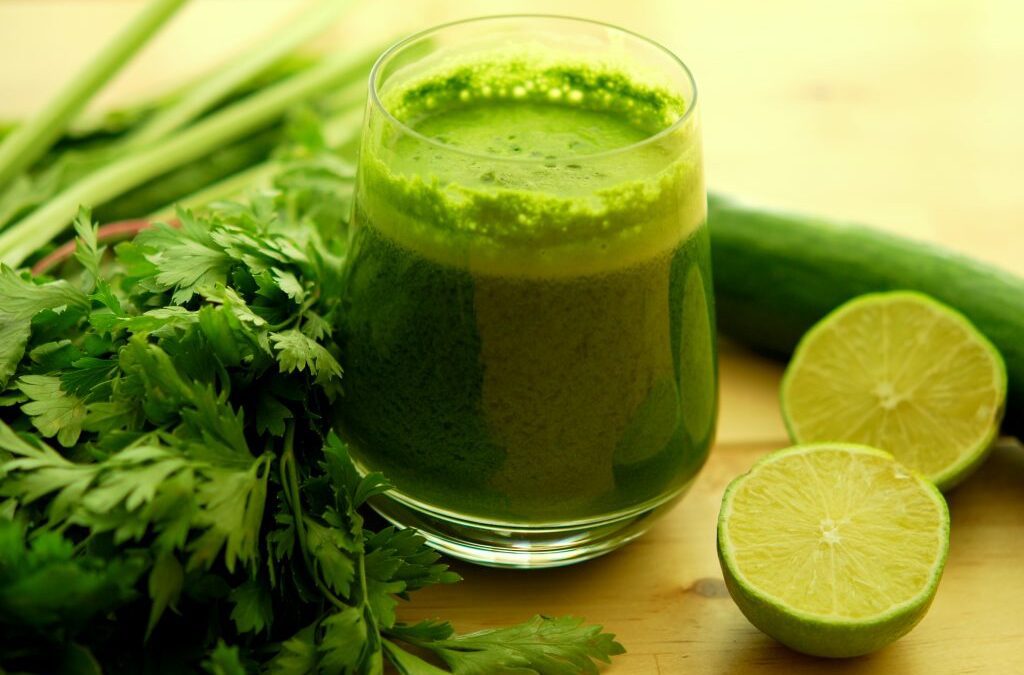
 How do you increase your veggie intake to help your health if you have almost no time in the evenings to prepare a full meal or you have problems chewing? Try these green smoothies. You can even make two servings and store leftovers in an airtight glass jar in the fridge for the next day. Citrus juice and airtight containers help prevent oxidation (nutrient loss and discolouration). If you don’t like your green smoothies cold you can heat these VERY gently in a saucepan until they are lukewarm.
How do you increase your veggie intake to help your health if you have almost no time in the evenings to prepare a full meal or you have problems chewing? Try these green smoothies. You can even make two servings and store leftovers in an airtight glass jar in the fridge for the next day. Citrus juice and airtight containers help prevent oxidation (nutrient loss and discolouration). If you don’t like your green smoothies cold you can heat these VERY gently in a saucepan until they are lukewarm.